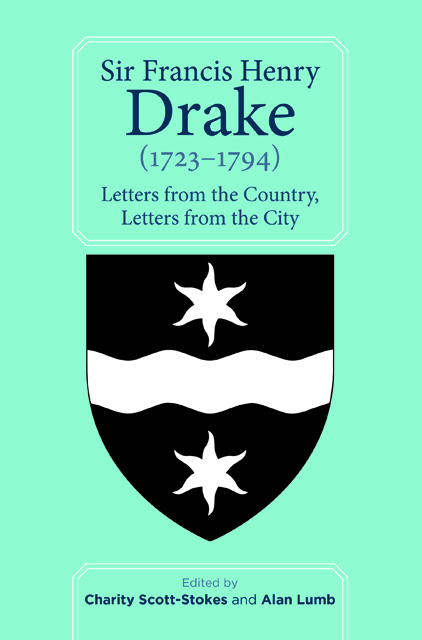Book contents
- Frontmatter
- Contents
- List of illustrations
- Acknowledgements
- Abbreviations
- Timeline. Design: Jonathan Hepworth
- Introduction
- 1 General Introduction
- 2 Elections and Infrastructure
- 3 Buckland Abbey and Nutwell Court: Buildings
- 4 Nutwell: Planting the Landscape
- 5 Healthways and Two Eighteenth-Century Devonshire Estates
- Editorial Method
- Bibliography
- Index
- Devon and Cornwall Record Society
- Devon and Cornwall Record Society Publications
4 - Nutwell: Planting the Landscape
Published online by Cambridge University Press: 14 June 2023
- Frontmatter
- Contents
- List of illustrations
- Acknowledgements
- Abbreviations
- Timeline. Design: Jonathan Hepworth
- Introduction
- 1 General Introduction
- 2 Elections and Infrastructure
- 3 Buckland Abbey and Nutwell Court: Buildings
- 4 Nutwell: Planting the Landscape
- 5 Healthways and Two Eighteenth-Century Devonshire Estates
- Editorial Method
- Bibliography
- Index
- Devon and Cornwall Record Society
- Devon and Cornwall Record Society Publications
Summary
The Nutwell letters provide intriguing details on the development of the grounds as well as further insights into those at Buckland Abbey. The correspondence provides the most detailed information on an estate's plants and planting for any set of Devon letters. Uncommon plants and trees are shown to have been of particular interest to Sir Francis Henry Drake.
It is clear that Sir Francis had a keen interest in ornamental landscapes, and from London he routinely sent detailed instructions on the organisation of Nutwell's grounds. In 1793, a year before the baronet's death, a neighbour credited Sir Francis with being ‘proficient’ in botany. It appears as though his interest in plants, and the study of them, was a considerable pursuit. This is borne out by manuscript notes penned by Sir Francis which were found in 1883 in his copy of William Hudson's Flora Anglica. Many important books from Nutwell's library had been sold the previous year, and the annotations which were discovered show that Sir Francis had made considerable personal investigations into the identification and location of plants, particularly those in and around his two estates in Devon. Hudson's volume had been published in 1762 while Rowe was corresponding with Sir Francis. Moreover, in 1829 the latter would be posthumously recognised in John Pike Jones and J. F. Kingston's Flora Devoniensis as having toured parts of Devon with Hudson in order to record native plants. He also corresponded about plants with William Borlase, the celebrated Cornish antiquary and naturalist.
This edition includes a number of letters from Hudson. The correspondence not only confirms Sir Francis's interest in plants but also establishes that the two men were on friendly terms. Hudson lived in London and in his letters he referred to the botany expeditions with Sir Francis, as well as to sending him such plants as ‘English’ Melica, ‘Welsh’ Cerastium, ‘Sea Pancratia’, otherwise known as the sea daffodil (Pancratium maritimum), vetch (Vicia), yellow wood anemone (Anemone ranunculoides), spreading bellflower (Campanula patula), night blooming cactus (Cereus grandiflora), heliotrope (Heliotropium odoratum), gardenia, and jasmine, as well as varieties of Plumeria, Gloriosa, Clitoria, Antholyza, Pentapetes, Asclepias, Leonarus, and Gladiolus. Hudson also sent seeds from various sources in London and from across the country and beyond; in one instance they were acquired from Jamaica.
- Type
- Chapter
- Information
- Sir Francis Henry Drake (1723-1794)Letters from the Country, Letters from the City, pp. 36 - 44Publisher: Boydell & BrewerPrint publication year: 2019

